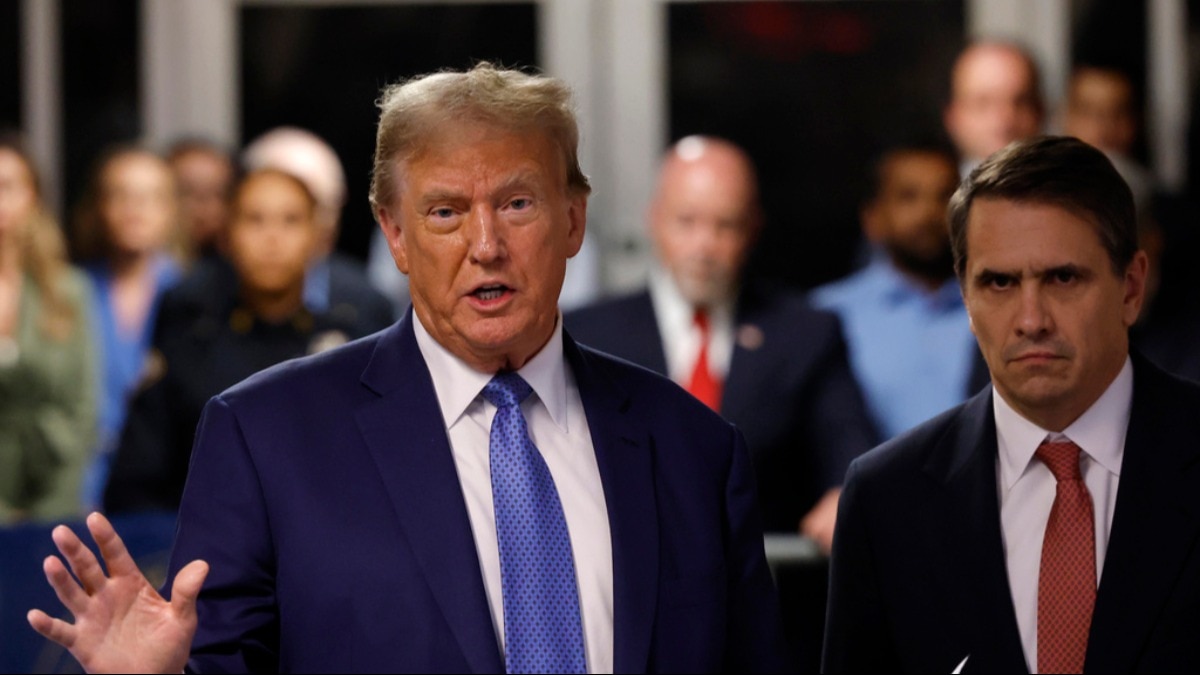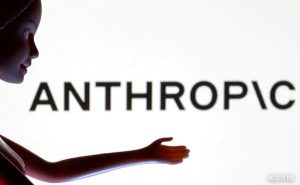2024-05-22 05:49:09
A recent video posted on Donald Trump’s social media account has stirred controversy as it included references to a “unified Reich”, amongst other hypothetical headlines, if he wins the November US Presidential Election.
The “unified Reich” appeared amongst the news flashes, that included, “Trump wins!!” and “Economy booms”. Additionally, other headlines referring to World War I also appeared.
“What happens after Donald Trump wins? What’s next for America?” Meanwhile, hypothetical headlines are shown, including: “Industrial strength significantly increased âæ driven by the creation of a ‘unified reich’.
After the Nazi reference to the “Unified Reich” flared up and received flack from many. The 30-second video, pulled down after 15 hours, created a row calling out Donald Trump and his intentions.
“This was not a campaign video, it was created by a random account online and reposted by a staffer who clearly did not see the word, while the President was in court,” Karoline Leavitt, the campaign press secretary later clarified.
The word “reich” was not noticed by Trump’s staff before it was published, according to a Politico report. The video surfaced on Trump’s account as the Republican nominee is looking to corner President Joe Biden on antisemitism.
Earlier, when Trump claimed that immigrants entering the US illegally are “poisoning the blood of our country” and referred to his opponents as “vermin”, many criticised him for rhetoric reminiscent of Adolf Hitler and the Nazi Party.
NEW
A video posted to Donald Trump’s account on his social media network included references to a “unified Reich”, among hypothetical news headlines if he wins the election in November.
I did Nazi this coming. pic.twitter.com/h8dYbnLVyL
— Republicans against Trump (@RpsAgainstTrump) May 21, 2024
The term “Unified Reich” isn’t a standard historical phrase but generally refers to the concept of a unified German state. The term ‘Reich’, which translates to a realm, was popularised by the dictator Adolf Hitler and his idea of the German state, ‘the Third Reich’.
Throughout history, the ‘Reich’ has denoted three important German empires: the Holy Roman Empire (First Reich), the German Empire (Second Reich), and Nazi Germany (Third Reich).
The Third Reich is most infamously associated with Nazi Germany under Adolf Hitler from 1933 to 1945, which was marked by extreme totalitarianism, aggressive militarism, and the horrific atrocities of the Holocaust.
FIRST REICH (HOLY ROMAN EMPIRE)
The Holy Roman Empire, officially named during Frederick Barbarossa’s reign in the 12th century, originated over 300 years earlier when Charlemagne was crowned emperor in 800 CE. The coronation of Roman Emperor Otto I in the 10th century, often marks the beginning of the Empire, also known as the First Reich, centred around modern Germany.
The ‘first reich’ spread across vast territories across western and Central Europe. Over its thousand-year history, the Empire fluctuated in geography, politics, and power but remained a loose confederation of semi-independent territories without major expansionist ambitions.
It was later dissolved by Emperor Francis II in 1806 in response to Napoleonic pressures.
SECOND REICH (GERMAN EMPIRE)
The German Empire, established in 1871 after the unification of various German states under the Prussian crown, is referred to as the ‘Second Reich’.
This era, lasting until 1918, marked Germany’s rise as a major European power.
The unification was achieved through a series of wars and diplomatic efforts led by Otto von Bismarck, the Prussian Chancellor. The Second German Empire, despite having a Kaiser (emperor) as an imperial figurehead like the Holy Roman Empire, was quite different. It was a centralised, authoritarian state that pursued an aggressive foreign policy, especially after Bismarck’s dismissal in 1890.
THIRD REICH (NAZI GERMANY)
The Nazi rise to power signalled the beginning of the Third Reich and the end of the Weimar Republic, a parliamentary democracy established in Germany after World War I.
The final years of the Weimar Republic were characterised by political deadlock, escalating street violence, and economic depression.
In 1933, President Paul von Hindenburg appointed Adolf Hitler as Chancellor of Germany, which was still a democracy at that time. Shortly after, dictatorial powers were consolidated by Hitler, and far-reaching transformations ensued. The German nation saw a massive militarisation, defying the sanctions.
In the initial months of Hitler’s chancellorship, the Nazis implemented a strategy of “coordination,” which aimed to align individuals and institutions with Nazi objectives. Within six months, all other political parties, including their coalition partner, the German Nationalists, were either banned or coerced into “voluntarily” dissolving. Under Nazi rule, control extended over culture, the economy, education, and law. The regime sought to “coordinate” the German churches, achieving varying degrees of success, with the majority of Catholic and Protestant pastors ultimately lending their support to the regime.
The vision for the Third Reich was an extensive German Empire, purged of minorities and intended to endure for a millennium.
However, in 1945, it was dismantled by a coalition of allied nations, comprising Britain, France, Russia, and the US. The Nazi regime, characterised by dictatorship and expansionism, pursued ideals of ethnic “purity” that sharply contrasted with the diverse array of peoples and territories under the First Reich.
The ‘unified Reich’, as a result, is controversial as it is heavily laden with historical significance, especially the third one that infamously carried out the mass murder of millions of Jews, Gipsies and Negroes. Therefore, the term ‘Unified Reich’ carries with it the weight of historical grievances and the memory of Nazi atrocities. Its use can evoke memories of Nazi Germany and imperialist ambitions, signal far-right symbolism, and provoke political controversy.
Donald Trump, unified Reich, Donald Trump unified Reich controversy, what is Unifeid Reich, Nazi Germany, third reich definition, reich meaning,
Source link
![]()



